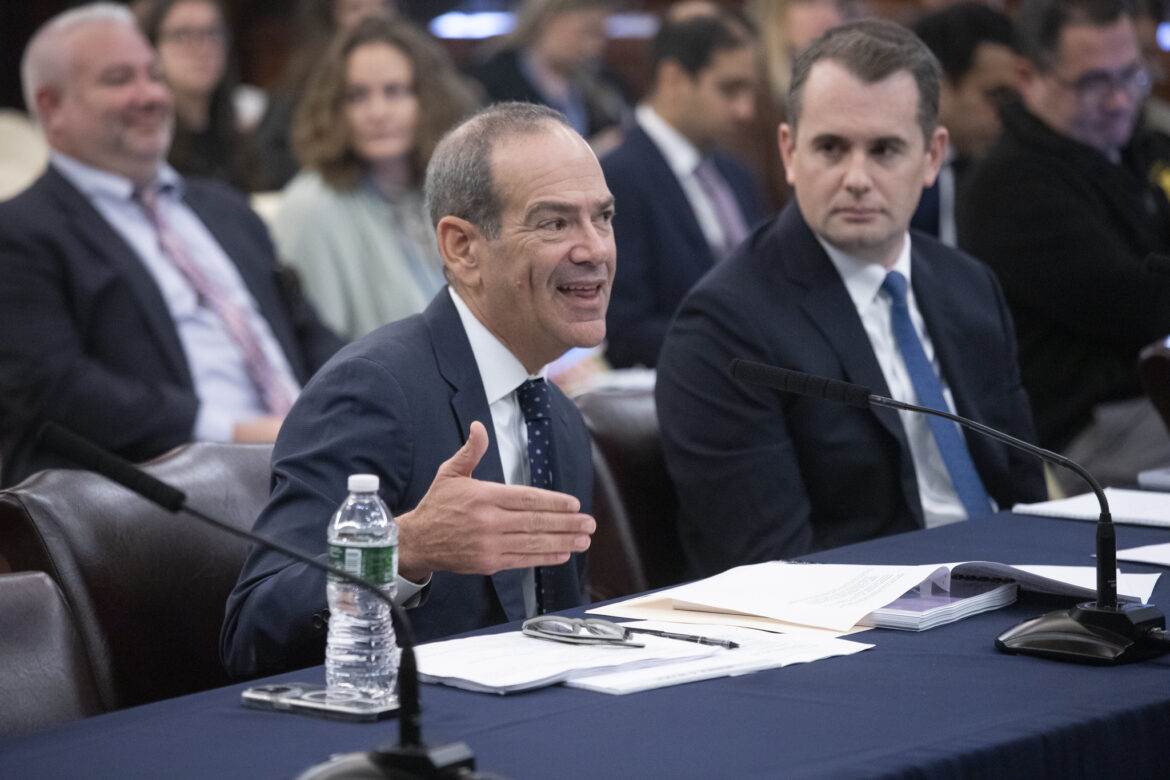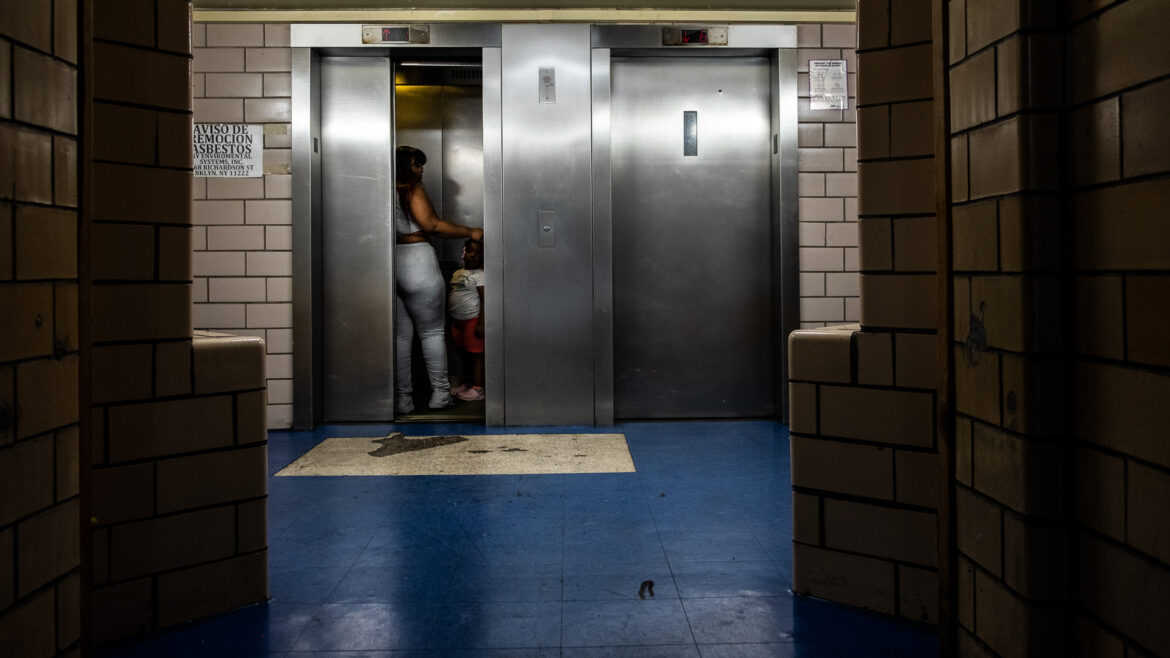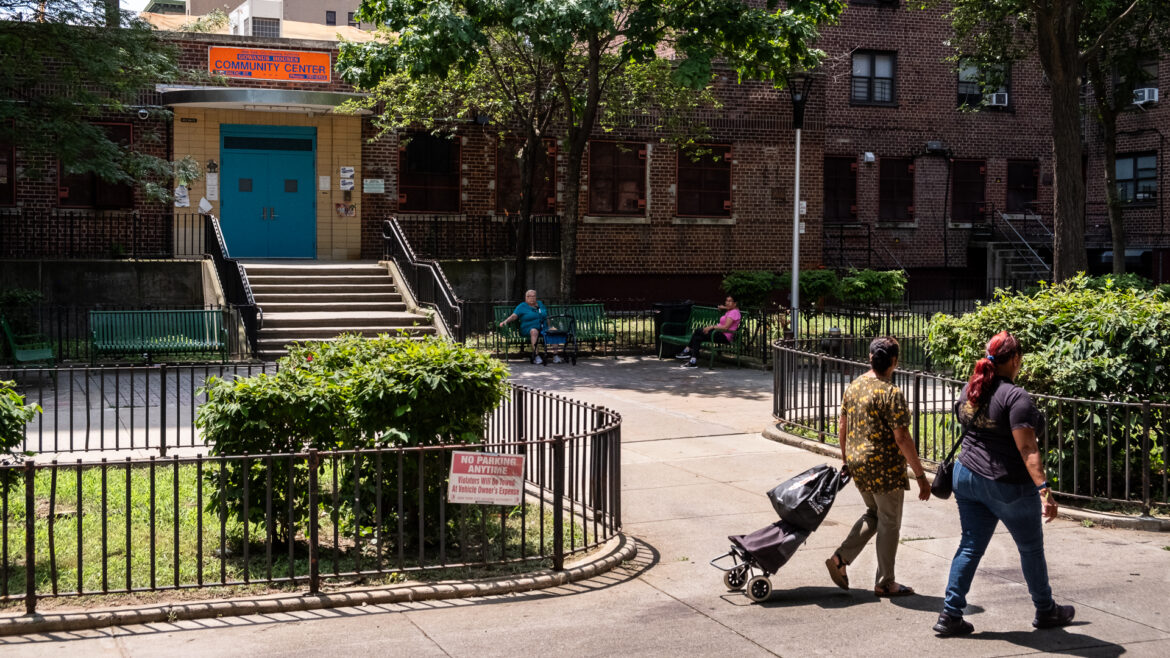At a recent City Council hearing, attorneys from the law firm Jenner and Block—the new co-monitors of NYCHA under a federal oversight agreement—shared their insights over the past eight months and answered questions about the scope of their work.

John McCarten/NYC Council Media Unit
Neil Barofsky and Matthew Cipolla of Jenner and Block, the current federal monitors overseeing NYCHA.NYCHA tenants might not immediately recognize the names Neil Barofsky and Matthew Cipolla.
But the two attorneys, of the law firm Jenner and Block, play an important role in public housing: since February, they’ve served as co-monitors of NYCHA under a federal oversight agreement, the second independent party to hold that role since the monitorship was put in place five years ago.
NYCHA tenants, have you noticed a difference in maintenance over the past five years, since the federal monitor was put in place? Send your thoughts to NYCHA reporter Tatyana Turner: Tatyana@citylimits.org
The pair were met with questions at a recent City Council hearing about how they measure progress, how much oversight they have of developments that converted to private management and what the overall relationship is between the federal monitor and residents.
How did we get here?
In 2018, when the New York City Housing Authority came under fire for issues such as slow repair times and providing false records about lead abatement inspections, a system was put in place to ensure that NYCHA appropriately manages its properties across the five boroughs.
The housing authority, along with the U.S. Department of Housing and Urban Development (HUD) and the United States Department of Justice (DOJ), agreed to have a third party watch over operational tasks such as quick response times for heat and elevator outages, lead paint removal and pest control.
Federal monitorship was introduced in January 2019 which, in conjunction with oversight, calls for detailed quarterly updates on how the housing authority is making progress and offers suggestions for improvements that can be made. Their specific areas of focus include heat, mold, lead, pests, waste, elevator service, and property inspections, as well as NYCHA’s organizational structure and capital projects.
Since its implementation five years ago, there have been two federal monitors. The first, Bart Schwartz, held the position between 2019 and February of this year. In his last report before departing, Schwartz suggested that NYCHA board members receive better training in order to be fully engaged with the housing authority’s progress.
That same month, the torch was passed to a law firm called Jenner and Block.
Who are they, and what do they do?
The Jenner and Block law firm, according to Barofsky, consists of roughly 25 attorneys who are working on the monitorship. Cipolla added that they also work with various vendors, including Turner and Townsend, a company that works on real estate and infrastructure projects nationwide, including for the Metropolitan Transportation Authority (MTA).
Other vendors include experts in monitoring, public housing and inspections, capital funds and part-time experts in technical matters to provide advice on issues such as pest management or lead abatement.
“When we do this type of work, one of the value adds that we’re trying to bring is looking at the data across the various areas to make sure that if it’s having an impact on pests, we’re not looking at pests in isolation, we’re also looking at how the capital is being deployed and if everything is on schedule,” said Cipolla. “We’re not thinking about where the source of funding to improve a particular metric is, we’re looking at is the metric improving or not.”
In their inaugural report published in August, Jenner and Block shared mixed reviews on NYCHA’s progress so far, praising the housing authority’s strides since the monitorship was first implemented while acknowledging where improvements still need to be made.
For instance, the report states that NYCHA is still “significantly out of compliance” with required response times to address mold. The Federal Agreement that established the monitorship, according to the report, requires NYCHA to remove or remediate visible mold within five business days, 95 percent of the time. But the housing authority did so only 12 percent of the time between Feb 1, 2023 and Jan. 31, 2024—or “year five” of the monitorship.
At the recent City Council hearing, Brooklyn Councilmember Alexa Aviles, former chair of the Public Housing Committee, asked about strategies Jenner and Block are pursuing to get NYCHA to improve their metrics on compliance regarding mold and leaks. Among the tasks, according to Barofsky, is to look at all of the Agreement metrics and see if there are any outstanding measurements that have yet to be reported.
“One of them, for example, is an obligation to reduce standing water within 48 hours,” said Barofsky. When digging into the issue, the team found that NYCHA was not measuring that matter because its standard protocol for leaks is still under development and has not been implemented yet.
“Once that is launched and it is automated, then you can capture data to measure and report out on standing water,” said Barofsky. “That’s a really important area to increase NYCHA’s performance.”
In terms of positives, NYCHA has improved some of its performance metrics around elevator outages. The report states that NYCHA is “coming close to or surpassing some requirements.”
The Federal Agreement, for example, requires that in year five, 85 percent of no-service elevator conditions be resolved within four hours of NYCHA’s awareness of the outage. In year five, 70 percent of conditions were resolved within that time frame.
Still, there are other areas where the housing authority is lagging, such as reducing the frequency of outages. The Agreement requires that 85 percent of multi-elevator banks have no more than one no-service condition per year, according to the report; but in year five, only 31 percent of multi-elevator banks hit that metric.
“One potential contributor is that NYCHA is not on track to meet its obligation to replace 275 elevators by December 31, 2024,” the report read.

Adi Talwar
The elevator at NYCHA’s Patterson Houses in the Bronx.Christina Chaise, a tenant at the Ravenswood Houses in Queens and the second vice president of the resident association board, testified at the Oct. 31 hearing over Zoom, recalling how inconvenient elevator service negatively impacted her.
“Although NYCHA has done a better job at responding to elevator outages, the outages are all too frequent,” said Chaise. “I remember an outage last January 2023 that had me carrying my newborn son and a heavy car seat down flights of stairs after having a cesarean section.”
Chaise added that preventative measures are needed, not just responding to repairs. “And we need stronger enforcement of regulations from the federal monitor’s office,” she said.
In his own testimony before lawmakers, Barofsky said the co-monitors focus on NYCHA’s progress in two areas: operations and organizational change. On the operations side, Barofskey explained, there are key metrics that have not been measured or reported out.
For instance, NYCHA has a solid response time when a boiler system is down in buildings. “But they haven’t been measuring and we haven’t been reporting on what happens to individual apartments,” Barofsky said. “So for example, a boiler goes out, that’s going to impact a whole bunch of apartments, a radiator goes out, that’s going to impact one apartment.”
The organizational side, according to Barofsky, includes “bigger cross cutting issues” such as resident communication and holding employees accountable through performance reviews.
“Basically, those are things that don’t impact just heat or just plumbing or just lead or just pests, but when they’re improved, NYCHA’s numbers will improve across the board,” said Barofsky.
There are also currently more than 8,000 apartments in NYCHA that are labeled as either vacant or “non-dwelling,” which are apartments that are off of the rent roll as they are either being renovated or not being used for residential use, according to NYCHA Metrics.
Manhattan Councilmember Gale Brewer asked the co-monitors what they are doing about oversight for vacancies.
“If vacant apartments are spreading or responsible for increasing a pest infestation, that would obviously be something very much within our area of concern,” said Barofsky. “If there’s leaking pipes that are going unattended in a vacant apartment that’s impacting other apartments, that would very much be in our area of concern.”
But Barofsky admitted that, “it’s not an area that we’ve focused on before.”
“Thank you for bringing this to our attention,” he said. “That’s why we like having these hearings because we don’t have a monopoly of good ideas and we really do appreciate the opportunity of hearing from folks who frankly have been working on this a lot longer than we have.”

Adi Talwar
NYCHA’s Gowanus Houses in July.How does the monitor interact with tenants?
Jenner and Block’s one-page overview of the monitorship highlights the value that resident engagement brings to their role.
“Resident engagement is critical,” the overview reads. “The monitors also host opportunities for residents and community leaders to raise concerns and share feedback.”
During the hearing, Cipolla spelled out some of the ways they engage with NYCHA tenants. He stated that Jenner and Block has a community advisory committee, and hosts town halls and meetings with resident leaders at developments, who introduce Cipolla and Barofsky to more members in the NYCHA community.
“One of our goals, and certainly we want to get better at this, is to make sure that everyone who wants to be heard is heard,” Cipolla said.
Barofsky cited an October town hall in the Rockaways where tenants were “very angry” but later shared their appreciation for the opportunity to connect with the federal monitors and directly connect with NYCHA management.
“We’re going to look to expand those types of meetings,” said Barofsky.
But at the Oct. 31 Council hearing, several residents shared their frustrations. Dana Elden, a tenant association president at the St. Mary’s Park Houses in the Bronx, testified on Zoom that she had not been able to get through to the co-monitors since their term began in February.
“I personally have emailed them numerous times since the beginning and have received no response other than to say that they’ve received my email,” said Elden. “As far as I’m concerned, NYCHA has not fulfilled their promise to give us the service that we need and the federal monitor needs to open up the door and speak to some of us out here in the field who are working hard every day with no pay to serve our communities.”
Cynthia Tibbs, a tenant association president at the West Side Urban Renewal (WSUR) brownstones in Manhattan, shared a similar story.
“We have yet to even get an introductory letter from the monitors’ office letting us know who they are, who’s in charge of what borough and how we can contact them,” said Tibbs on Zoom. “They have not worked with us at all.”

Adi Talwar
Baychester Houses in the Edenwald neighborhood of the Bronx, which is under private management as part of NYCHA’s PACT initiative.What about PACT?
For housing developments that converted to private management, monitorship looks slightly different.
There are more than 37,800 apartments in NYCHA’s Permanent Affordability Commitment Together (PACT) program, a initiative that aims to get more funds to repair properties by transferring them out of the traditional Section 9 public housing model to a more lucrative Project-Based Section 8, another federally funded program.
Doing so allows private managers to take over operations. Once converted, the new management team becomes responsible for the maintenance of the property.
While the federal monitors have oversight of PACT sites, there are limitations on what they can do. In their scope of work for PACT, the major areas of focus are elevators, heat and lead.
The federal monitor team, Barofsky explained, goes to each development to investigate and verify those metrics. For lead, the team goes out to make sure that lead abatement has not only been completed, but is being done in a “legally compliant manner.”
But their oversight is “limited,” when it comes to issues outside of those three areas, said Barofsky. Councilmember Chris Banks, who chairs the Council’s Public Housing Committee, continued to drilled down on the jurisdictional limitations.
“If residents are bringing issues to you about the RAD/PACT conversions, how are you handling those?” he asked.
“We never ignore a resident, we never tell a resident your concern is outside our jurisdiction and therefore go find your own way,” said Barofsky. “We would find the right person to address that issue.” An example, he testified, was when a resident association brought up a problem related to security.
“The help we were able to provide was bringing together the resident association leaders and more senior leadership in NYCHA to try and make sure they have the access that they needed to be heard,” said Barofsky. “Oftentimes it’s facilitating those types of communications and that type of attention…more conduit than referee.”
To reach the reporter behind this story, contact Tatyana@citylimits.org. To reach the editor, contact Jeanmarie@citylimits.org
Want to republish this story? Find City Limits’ reprint policy here.








